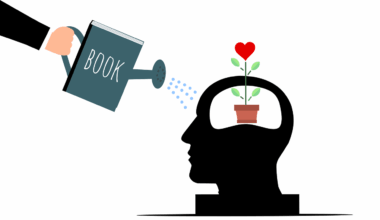Using Motivation Theories to Enhance Marketing Strategies
Understanding motivation theories can dramatically affect your marketing strategies. Motivating factors play a crucial role in influencing consumer behavior and purchasing decisions. By examining Maslow’s hierarchy of needs, marketers can identify how their products or services meet the needs of potential customers, which ranges from basic physiological needs to self-actualization. For instance, luxury goods appeal to consumers’ esteem needs, while practical products may satisfy physiological aspects. Marketers can enhance strategies by segmenting their audience based on varying motivation levels. Incorporating emotional appeals into marketing campaigns can lead to higher engagement rates. When customers feel emotionally connected to a brand, they are more likely to remain loyal. Storytelling is a powerful tool that can evoke emotions and highlight a product’s benefits. Additionally, marketers can include consumer testimonials and success stories to establish credibility. To sum up, aligning marketing tactics with motivation theories offers a structured approach to understanding consumer needs, leading to more effective campaigns that stimulate buying behavior. These strategies ensure a marketed product resonates strongly with its intended audience, stimulating interest and, ultimately, sales.
Another key motivation theory is the Self-Determination Theory (SDT), which emphasizes the importance of intrinsic motivation. This theory posits that individuals are driven by intrinsic factors, such as satisfaction and personal growth. Marketers can leverage this by creating campaigns that promote self-improvement or align with consumers’ values and goals. For example, brands that emphasize sustainability often attract environmentally conscious consumers, enhancing brand loyalty. Additionally, highlighting personal stories related to a product can further align consumers’ intrinsic motivations with brand messaging. Interactive marketing techniques can also enhance intrinsic motivation by encouraging participation and engagement. Social media platforms provide an excellent avenue for interactive marketing, as they enable consumers to share their experiences and successes. To create a more profound impact, brands can integrate gamification into their marketing strategies, rewarding users for their participation. Building a community around a brand that values contribution and self-expression can foster a more substantial emotional connection. Thus, focusing on intrinsic motivation, driven by individual values and goals, can significantly enhance marketing strategies and consumer relationships, leading to sustained success.
Applying Behavioral Theories in Marketing
Behavioral theories, particularly the Theory of Planned Behavior, can provide insights into predicting consumer actions. This theory suggests that behavior is influenced by attitudes, subjective norms, and perceived behavioral control. Marketers can utilize this framework to shape favorable attitudes towards their products by highlighting their benefits and advantages. Running targeted advertising campaigns can increase the perceived ease of use, thus influencing purchase intentions. Advertisements designed to emphasize social acceptance can also sway consumer behavior positively. Informing potential buyers of social approval garnered from choosing a product may encourage them to buy it. Additionally, brands can leverage social media influencers who embody the target demographic to enhance their credibility and reach. The presence of these influencers can establish subjective norms, encouraging their followers to conform. Ultimately, applying behavioral theories such as this helps marketers to strategize effectively by aligning their marketing messaging with the factors influencing purchasing decisions. By considering what motivates consumer behavior and effectively communicating benefits, marketers can drive higher sales and solidify long-term consumer relationships.
Another approach is to implement Herzberg’s Two-Factor Theory, which distinguishes between hygiene factors and motivators. Hygiene factors, such as price and availability, can lead to customer dissatisfaction if not adequately addressed. Therefore, ensuring that these factors are met is essential for a successful marketing strategy. However, to truly stimulate customer satisfaction, marketers must also focus on motivators that enhance consumer engagement and create positive experiences. This may involve offering loyalty programs, exclusive discounts, or unique experiences that delight customers and contribute to brand loyalty. By analyzing the motivators specific to their target market, businesses can tailor their offerings and messaging effectively. Packaging products in an appealing manner or providing exceptional customer service can also serve as motivators that elevate brand perception. Furthermore, continuous feedback from consumers helps businesses refine their products or services. Utilizing this feedback effectively in marketing strategies leads to long-lasting relationships with customers, fostering trust and credibility. Therefore, by recognizing the significance of both hygiene factors and motivators, marketers can develop holistic strategies that cater to consumers’ varied expectations.
The Role of Social Influences in Marketing
Social influences play a vital role in shaping consumer motivation and buying behavior. The social identity theory suggests that individuals derive parts of their identity from their affiliations with specific groups, making group dynamics an essential consideration for marketers. Brands must recognize the potential impact of social proof on consumer behavior by showcasing positive peer reviews and testimonials in their marketing materials. Highlighting a product’s popularity can help correct misconceptions and encourage potential customers to purchase due to perceived societal validation. Marketers should also encourage user-generated content, enabling customers to share their experiences, which further enhances social proof. Engaging customers through contests or community initiatives can solidify group identity and build a loyal customer base that advocates for the brand. Furthermore, targeting influencers within specific social groups can aid in influencing purchasing decisions, as many individuals look to their peers for guidance in making choices. Understanding and harnessing social influences can dramatically enhance marketing strategies, creating opportunities for businesses to resonate with diverse audience segments effectively.
Another effective approach is using the Elaboration Likelihood Model (ELM) to tailor marketing messages. This model explains how consumers process persuasive information through two routes: the central route and the peripheral route. Marketers can utilize the central route when targeting consumers who are highly involved and motivated, focusing on in-depth information about the product’s benefits and features. In contrast, the peripheral route is suited for less-involved consumers, who tend to rely on superficial cues such as packaging and endorsements. Advertising content should match the level of involvement demonstrated by the audience to maximize effectiveness. For instance, high-involvement consumers might respond positively to detailed comparisons and scientific evidence, while low-involvement consumers may be influenced by catchy visuals and brand imagery. Additionally, integrating direct calls to action can prompt decision-making. Thus, knowing which route consumers may utilize allows marketers to fine-tune their campaigns and effectively capture audience attention. Applying the Elaboration Likelihood Model ensures that marketing messages resonate with both high and low-involvement consumers, driving better engagement and sales.
Conclusion: Integrating Motivation Theories in Marketing
In conclusion, integrating motivation theories into marketing strategies is paramount for driving consumer engagement and sales. Understanding the motivations behind consumer behavior, whether intrinsic or extrinsic, enables marketers to create more targeted campaigns that resonate with their audience. By leveraging various motivation theories like Maslow’s hierarchy, Self-Determination Theory, and the Elaboration Likelihood Model, marketers can identify the essential factors influencing purchasing decisions. Furthermore, incorporating behavioral theories and social influences offers deeper insights into the complexities of consumer psychology. By crafting messages and campaigns that reflect consumers’ needs and desires, businesses can foster emotional connections that ultimately enhance brand loyalty. It’s essential to remain agile and responsive to consumer feedback. As consumer motivations evolve, so too should marketing strategies, ensuring an up-to-date understanding of market dynamics. Therefore, prioritizing motivation theories in the development of marketing strategies aids brands in establishing a solid foothold in competitive markets, creating opportunities for sustainable growth and success. Ultimately, aligning marketing strategies with insights from psychology not only advances businesses but also serves the needs of consumers.
This is the last summary paragraph that reflects on the power of motivation theories.


